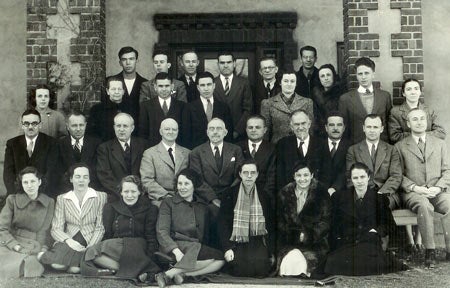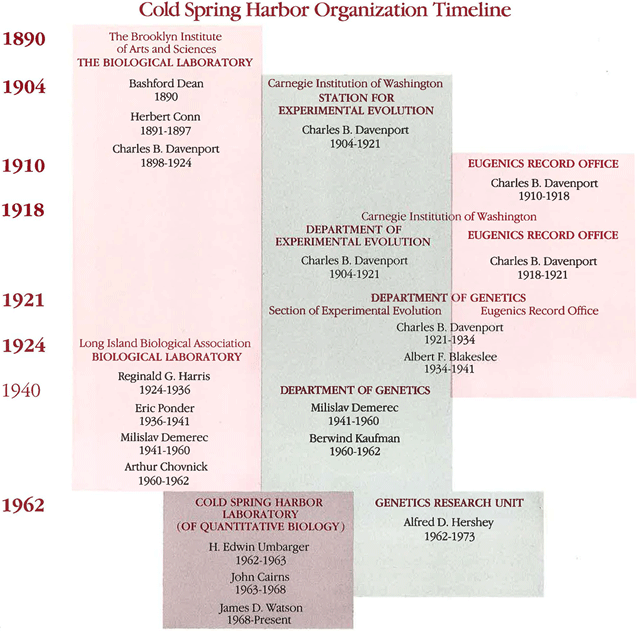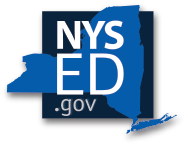Carnegie Institution of Washington
 In 1903 the Carnegie Institution of Washington (CIW), the privately-funded scientific research organization founded by Andrew Carnegie in 1902, approved a plan to establish a biological experiment station to study evolution. The Station for Experimental Evolution (SEE) formally opened on June 11, 1904 in Cold Spring Harbor, New York, to study heredity and evolution through breeding experiments with plants and animals. Under the initial directorship of Charles Benedict Davenport (1866–1944), the unit would flourish and operate for 67 years, undergo name changes as it fine-tuned its research focus, combine with and then close down a eugenics research operation, and eventually merge with neighboring Long Island Biological Association’s Biological Laboratory (LIBA Bio Lab). This union eventually became Cold Spring Harbor Laboratory, a research and educational institution which played a pivotal role during the 20th century in the emergence of molecular genetics, the scientific foundation of the revolution in biology and biotechnology.
In 1903 the Carnegie Institution of Washington (CIW), the privately-funded scientific research organization founded by Andrew Carnegie in 1902, approved a plan to establish a biological experiment station to study evolution. The Station for Experimental Evolution (SEE) formally opened on June 11, 1904 in Cold Spring Harbor, New York, to study heredity and evolution through breeding experiments with plants and animals. Under the initial directorship of Charles Benedict Davenport (1866–1944), the unit would flourish and operate for 67 years, undergo name changes as it fine-tuned its research focus, combine with and then close down a eugenics research operation, and eventually merge with neighboring Long Island Biological Association’s Biological Laboratory (LIBA Bio Lab). This union eventually became Cold Spring Harbor Laboratory, a research and educational institution which played a pivotal role during the 20th century in the emergence of molecular genetics, the scientific foundation of the revolution in biology and biotechnology.
In 1902, and again in 1903, Charles Benedict Davenport (1866–1944), approached CIW with a proposal to establish a biological station at Cold Spring Harbor. The trustees of CIW approved his plan, and he became the first director (1904–1934) of the Department of Genetics (originally named the Station for Experimental Evolution (SEE)). During this same time period, Davenport was also the director of the Brooklyn Institute of Arts and Sciences’ Biological Laboratory (BIAS Bio Lab), a summer field station for high school and college science teachers that he had led since 1898. The Department of Genetics and the BIAS Bio Lab were neighbors, operating on adjacent acres of land donated to each of them by The Wawapex Society, a philanthropic foundation established by the John D. Jones family of Long Island, New York. In 1910, while Davenport was directing both those operations, Mrs. E. H. Harriman established the Eugenics Record Office (ERO) at Cold Spring Harbor for him to head as well. In 1918 the ERO was donated to CIW, and became part of the Department of Genetics in 1921. Davenport concurrently headed BIAS Bio Lab, CIW’s Department of Experimental Evolution (changed from SEE in 1918), and the ERO until 1924. That year ownership and management of BIAS Bio Lab was transferred to a newly formed Long Island Biological Association (LIBA). See Related Collections for histories of BIAS Bio Lab, LIBA Bio Lab, and ERO.
The occurrence of overlapping directorships was to be repeated again among the Department of Genetics, the BIAS Bio Lab, the LIBA Bio Lab, and the ERO during most of the 67-year span the Department of Genetics was in existence. See Cold Spring Harbor Organization Timeline 1890–1988 for organizational relationships and overlapping directors.
There were five directors of the Carnegie Institution of Washington Department of Genetics:
- Charles Benedict Davenport (1866–1944), director from 1904–1934
- Albert Francis Blakeslee (1874–1954), director from 1934–1941
- Milislav Demerec (1895–1966), director from 1941–1960
- Berwind Peterson Kaufmann (1897–1975), director from 1960–1962
- Alfred Day Hershey (1908–1997), director from 1962–1971
In 1962 CIW and LIBA’s Bio Lab agreed to merge to form Cold Spring Harbor Laboratory of Quantitative Biology. By 1970 the name was shortened to Cold Spring Harbor Laboratory. A reduced number of CIW scientific investigators, including Nobel Laureates Alfred D. Hershey and Barbara McClintock, would remain with a skeletal staff and operate as the Genetics Research Unit until it closed in 1971.
Brief Timeline
1904, 1905 STATION FOR EXPERIMENTAL EVOLUTION
1906–1920 DEPARTMENT OF EXPERIMENTAL EVOLUTION
Department of Carnegie Institution of Washington
Director: Dr. Charles B. Davenport
*On Saturday, June 11, 1904, there was a gala ceremony to mark the formal opening of the Carnegie Institution’s Station for Experimental Evolution. It was evident that the Carnegie Institution of Washington was serious about making Cold Spring Harbor the site of serious year-round research.
1921–1962 DEPARTMENT OF GENETICS OF CARNEGIE INSTITUTION OF WASHINGTON (Merger of Station for Experimental Evolution and Eugenics Records Office)
Director: 1921–1934 Dr. Charles B. Davenport 1934–1941 Dr. Albert F. Blakeslee 1941–1960 Dr. Milislav Demerec 1960–1962 Dr. Berwind P. Kaufmann
*In 1962 Caryl Haskins, then president of CIW closed down the Dept. of Genetics and hand over its physical resources to the Bio Lab provided it could become a financially viable organization. If this could be accomplished the CIW would continue to support Barbara McClintock and Alfred Hershey at Cold Spring Harbor.
1962–1971 GENETICS RESEARCH UNIT Carnegie Institution of Washington
Director: 1962–1971 Dr. Alfred D. Hershey
Monograph Series
Number/Author/Title
6 Coville, Frederick Vernon, & Daniel Trembly MacDougal. Desert Botanical Laboratory of the Carnegie Institution.
8 Farlow, William G. Bibliographical Index of North American Fungi. Vol. I, Part I. Abrothallus to Badhamia.
11 Newcomb, Simon. A Statistical Inquiry into the Probability of Causes of the Production of Sex in Human Offspring
12 Noguchi, Hideyo. The Action of Snake Venom upon Cold-Blooded Animals
16 Jennings, Herbert S. Contributions to the Study of the Behavior of Lower Organisms.
18 Morse, Albert Pitts. Researches on North American Acridiidae.
19 Enteman, Wilheine M. Coloration in Polistes.
20 Duerden, J.E. The Coral Siderastrea radians and Its Postlarval Development.
23 Castle, W.E. Heredity of Coat Characters in Guinea-Pigs and Rabbits.
24 MacDougal, D.T., assisted by A.M. Vail, G.H. Shull, & J.K. Small. Mutants and Hybrids of the Oenotheras.
25 Gulick, John T. Evolution, Racial and Habitudinal.
27 Smith, Erwin F. Bacteria in Relation to Plant Diseases. Vol. I. Methods of Work and General Literature of Bacteriology Exclusive of Plant Diseases Vol. II. History, General Considerations, Vascular Diseases. Do not have Vol. III
29 Baird, John Wallace. The Color Sensitivity of the Peripheral Retina.
30 Shull, George Harrison. Stages in the Development of Sium cicutaefolium.
32 Dean, Bashford. Chimaeroid Fishes and Their Development.
35 Coblentz, William W. Investigations of Infra-Red Spectra. Part I.and Part II.
36 Stevens, N.M. Studies in Spermatogenesis. Part I. and Part II.
37 Harper, R.A. Sexual Reproduction and the Organization of the Nucleus in Certain Mildews. (2 copies)
39 Handbook of Learned Societies and Institutions: America.
42 Atwater, W.O. & F.G. Benedict. A Respiration Calorimeter, with Appliances for the Direct Determination of Oxygen
47 Mayer, Alfred G. Rhythmical Pulsation in Scyphomedusae.
48 Tower, William Lawrence. An Investigation of Evolution in Chrysomelid Beetles of the Genue Leptinotarsa.
49 Papers of the Station for Experimental Evolution, Nos. 5,6.
50 Livingston, Burton Edward. The Relation of Desert Plants to Soil Moisture and to Evaporation. (2 copies)
51 Stevens, N.M. Studies on the Germ Cells of Aphids.
52 Davenport, C.B. Inheritance in Poultry.
58 Pearl, Raymond, with the assistance of Olive M. Pepper and Florence J. Hagle. Variation and Differentiation in Ceratophyllum. (2 copies)
64 Pearl, Raymond, and A.B. Clawson. Variation and Correlation in the Crayfish, with Special Reference to the Influence of Differentiation and Homology of Parts.
67 Banta, Arthur M. The Fauna of Mayfield’s Cave.
68 Morse, Albert Pitts. Further Researches on North American Acridiidae.
70 MacCurdy, Hansford and W.E. Castle. Selection and Cross-Breeding in Relation to the Inheritance of Coat-Pigments and Coat-Patterns in Rats and Guinea-Pigs.
77 Benedict, Francis Gano. The Influence of Inanition on Metabolism.
81 MacDougal, D.T., A.M. Vail, and G.H. Shull. Mutations, Variations, and Relationships of the Oenotheras.
82 Lloyd, Francis Ernest. The Physiology of Stomata.
84 Osborne, Thomas B. The Proteins of the Wheat Kernel.
94 Conrad, Henry Shoemaker. The Structure and Life-History of the Hay-Scented Fern
95 Davenport, Charles B. Inheritance in Canaries.
98 Studies at the Desert Laboratory.
99 MacDougal, Daniel Trembly. Botanical Features of North American Deserts. (2 copies)
101 Lutz, Frank E. The Variation and Correlations of Certain Taxonomic Characters of Gryllus.
102 Papers from the Tortugas Laboratory of the Carnegie Institution of Washington. Vol. I.
103 Papers from the Tortugas Laboratory of the Carnegie Institution of Washington. Vol. II.
104 Eigenmann, Carl H. Cave Vertebrates of America: A Study in Degenerative Evolution.
109 Mayer, Alfred Goldsborough. The Medusae of the World. Vol. I., II., and III.
112 Shull, George Harrison. Bursa bursa-pastoris and Bursa heegeri: Biotypes and Hybrids.
113 Spaulding, Volney M. Distribution and Movements of Desert Plants.
114 Castle, W.E., with H.E. Walter, R.C. Mullenix, and S. Cobb. Studies of Inheritance in Rabbits.
116 Reichert, Edward Tyson, and Amos Peaslee Brown. The Differentiation and Specificity of Corresponding Proteins and Other Vital Substances in Relation to Biological Classification and Organic Evolution: The Crystallography of Hemoglobins. (2 copies)
117 Cannon, William Austin. Studies in Heredity As Illustrated by the Trichomes of Species and Hybrids of Juglans, Oenothera, Papaver, and Solanum.
121 Davenport, Charles B. The Symmetric Function Tables of the Fifteenthic. Including an Historical Summary of Symmetric Functions As Relating to Symmetric Function Tables.
122 Johnson, Roswell H. Determinate Evolution in the Color-Pattern of the Lady-Beetles.
123 Benedict, Francis G., & Thorne M. Carpenter. Respiration Calorimeters for Studying the Respiratory Exchange and Energy Transformations of Man.
126 Benedict, Francis G., and Thorne M. Carpenter. The Metabolism and Energy Transformations of Healthy Man during Rest.
129 MacDougal, D.T., & W.A. Cannon. The Conditions of Parasitism in Plants. (2 copies)
131 Cannon, William Austin. The Root Habits of Desert Plants.

 This collection was processed under a 2011-2012 DHP award. Funding provided by the New York State Education Department’s Documentary Heritage Program.
This collection was processed under a 2011-2012 DHP award. Funding provided by the New York State Education Department’s Documentary Heritage Program.